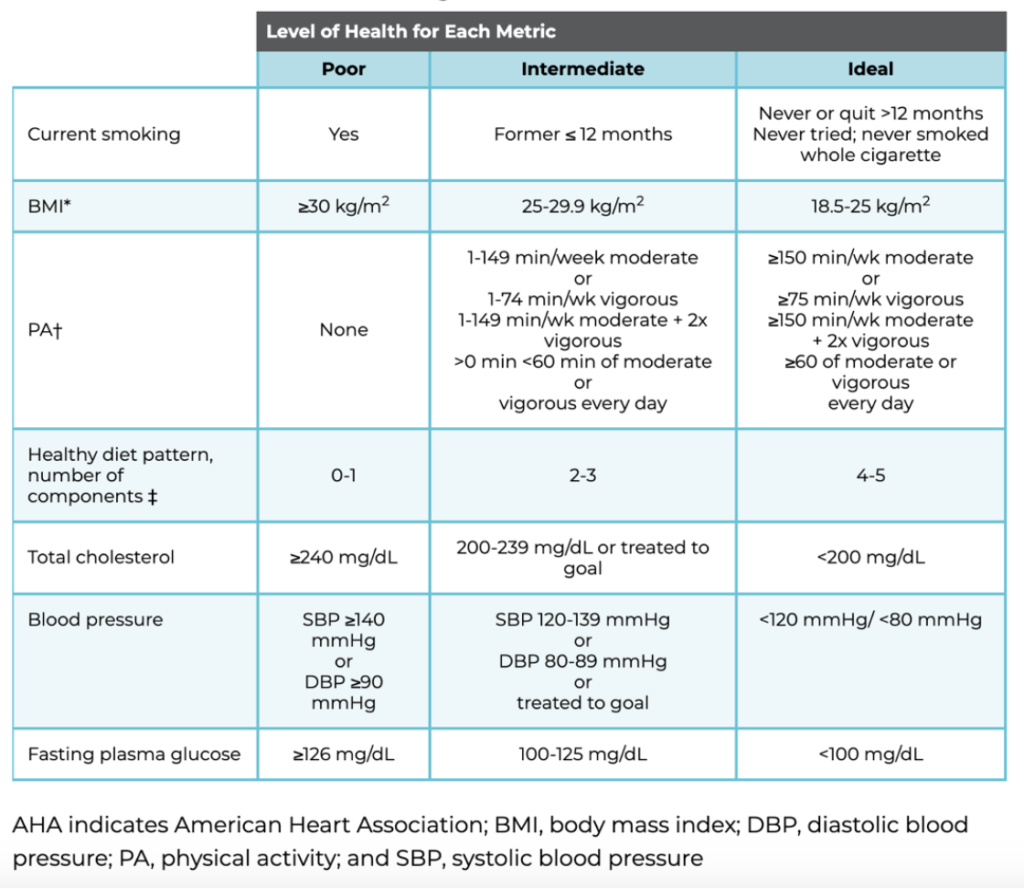
In 2010 the American Heart Association coined the term Life’s Simple 7, referring to the seven most important predictors of heart health. The Simple 7 included four behaviors that patients could modify (smoking, weight, diet and exercise) as well as three biometric measures (blood pressure, cholesterol and blood glucose)1.
The AHA also classified these seven factors into three categories (ideal, intermediate and poor)2 to help create a common standard.

Along with identifying these seven factors and establishing metrics to track what ‘good’ looked like, the AHA also set a 10-year goal for improvement. The goal? A 20% reduction in cardiovascular disease and stroke mortality and a 20% improvement in cardiovascular health in all Americans by 2020.1 While data isn’t available through the end of 2020 at this time, the death rates from cardiovascular disease have decreased since the Simple 7’s introduction,3 highlighting the potential effectiveness of the initiative.
But, we’re not finished yet. In fact, a recent study suggests that adding sleep to the Simple 7 could improve the accuracy of cardiovascular disease risk prediction. We will be diving into the facts on why sleep is missing from this important list of risk factors in our next article.
References:
- Lloyd‐Jones DM, Hong Y, Labarthe D, Mozaffarian D, Appel LJ, Van Horn L, Greenlund K, Daniels S, Nichol G, Tomaselli GF, Arnett DK, Fonarow GC, Ho PM, Lauer MS, Masoudi FA, Robertson RM, Roger V, Schwamm LH, Sorlie P, Yancy CW, Rosamond WD. Defining and setting national goals for cardiovascular health promotion and disease reduction: the American Heart Association’s strategic Impact Goal through 2020 and beyond. Circulation. 2010; 121:586–613.
- https://playbook.heart.org/lifes-simple-7/
- https://nccd.cdc.gov/DHDSPAtlas/Reports.aspx
